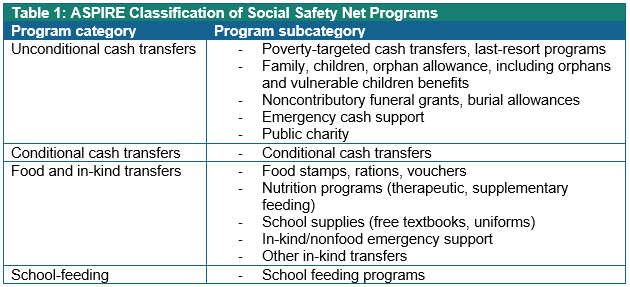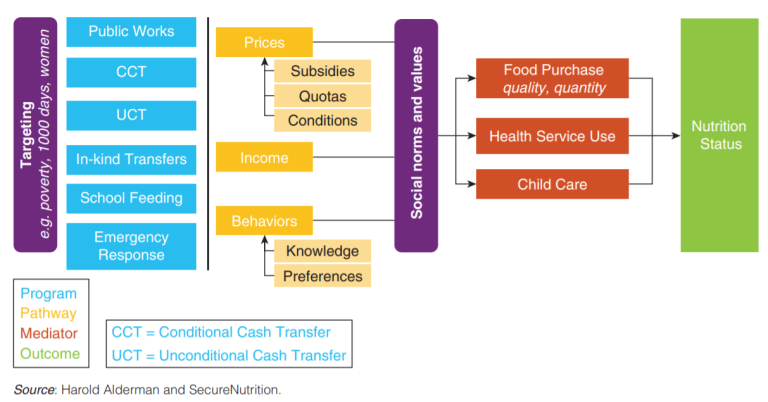What is nutrition-sensitive social protection?
Nutrition-sensitive sectors address the underlying determinants of maternal and child malnutrition (e.g. food security, education), and investments in these sectors are critical to global strategies for eliminating undernutrition. As a cross-cutting dimension, social protection is core to nutrition-sensitive actions. Social protection initiatives aim to protect families from poverty and vulnerability by offering a mix of financial and in-kind benefits such as food baskets or cash transfers to at-risk populations (including mothers and their children). Nutrition-sensitive social protection (NSSP) programs have shown promise in addressing undernutrition and are becoming vital platforms for addressing food insecurity during COVID-19.
Why is measurement of NSSP programs complex?
Compared to a simple vertical intervention such as receiving a vitamin supplement, NSSP programs are often:
- Multi-component (e.g. Include education/counseling, healthcare visits, transfer of goods or funds)
- Target several household members at one time
- Dispensed in multiple locations (e.g. Home, facility)
- Necessitate repeat visits to receive benefits
- Have conditions or requirements for receipt
- Unknown by name to the beneficiary
How is DataDENT advancing NSSP measurement?
As may be expected, the sheer number and multifaceted nature of listed features render measurement of NSSP programs particularly tricky! DataDENT is developing global guidelines for NSSP program measurement (focused on delivery, process and impact), with the aim of producing a coverage measurement framework and a set of proposed indicators and questions that could be used for assessing household-level coverage of specific types of NSSP programs. Indicators and questions could be adopted in large-scale multi-topic household surveys (e.g. nationally representative surveys including Demographic and Health Surveys (DHS), Multiple Indicator Cluster Surveys (MICS), Living Standards Measurement Study (LSMS)) and household surveys conducted as part of program-specific evaluations.
Using the ASPIRE classification of Social Safety Net Programs (Table 1), this project is focused on programs that have direct or indirect nutrition components and target the typical beneficiaries of nutrition programming in low-and-middle-income countries (LMICs) including women of reproductive age/mothers, children under age 5 years and adolescents. Broadly, our focus on NSSP programs include unconditional cash transfers, conditional cash transfers, food and in-kind transfers and school-feeding.

This mixed methods project includes: 1) reviews of peer-reviewed and gray literature; 2) identification, collation and abstraction of relevant questions and indicators from national household surveys and programmatic surveys; 3) consultations with expert stakeholders; 4) analysis of quantitative data; and 5) cognitive testing of proposed survey questions. Thus far, DataDENT has completed reviews of existing literature, national household surveys, program surveys, and global data repositories. Looking forward, DataDENT will be developing a working NSSP program measurement framework, finalizing a list of questions and indicators, and conducting cognitive and/or field testing of questions. DataDENT will also do advanced quantitative analyses linking NSSP program coverage data to key nutritional outcomes.
Findings will be packaged together into several outputs (scientific papers, policy document, technical advice) to further NSSP dialogue and action across diverse stakeholders including donors, academia, norm-setting bodies, governments, implementers, and civil society.

